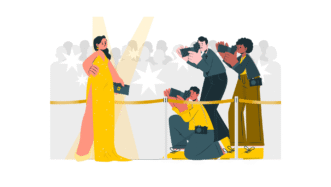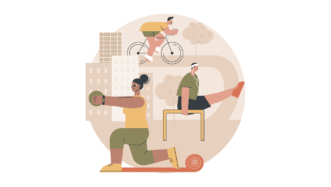LESSON OVERVIEW
The main objectives of this lesson on giving compliments are to:
- learn phrases for giving and receiving compliments;
- practise complimenting situations;
- watch a video in which a man compliments strangers.
With this lesson, students give and receive compliments! They watch a funny video in which a man compliments strangers and learn phrases to give and receive compliments. They discuss questions and look at complimenting ‘rules’. They match compliments and responses and practise lots of complimenting situations to learn how to naturally give and receive a compliment.
WARM-UP AND VIDEOS
This ESL lesson on giving compliments begins with a warm-up. Students discuss some general questions about compliments, e.g. if they prefer giving or receiving compliments. Next, students watch a video in which a man gives compliments to people. Before they watch it, students guess what compliment the man will give by completing sentences with their own ideas. Then, they watch the video and check their answers. After that, students look at some unfinished statements about the video. They choose a word and continue the statement with their own idea, e.g. (The nicest/funniest/strangest compliment from the video was…). Following that, students choose four of six situations and give a related compliment. They use phrases in a box to help them (e.g. You have a lovely…I like your…).
DISCUSSION
Next in this ESL lesson on giving compliments, students match compliments with the responses (e.g. Nice shoes! – Do you really think so? Thanks, I’ve just bought them). Then, students look at compliments and use responses in a box to accept the compliment. They also need to add some detail (e.g. Nice car! – Right back at you! Is yours new?). Next, students look at rules for giving good compliments (e.g. be specific, accept and respond). They read three situations underneath each rule and think of what they could say in each situation using the rule. Last in the ESL lesson on giving compliments, students get cards with situations. In pairs, they create a compliment for their partner based on the situation (e.g. You like your partner’s scarf) and have their partner respond. Students are also encouraged to ask a follow-up question or make a comment.
HOMEWORK/REVISION
This lesson plan also includes an additional task that you can use as homework or revision. In the task, students choose the word that makes the most sense to complete the compliment. Then, they add a response to each compliment. The task is available in the teacher’s version of the worksheet. You can print it and hand it out to your students. It’s also included in the e-lesson plan.
WORKSHEETS
Subscribe to unlock these and many other Standalone lesson with the Premium plan
Subscribe











Comments